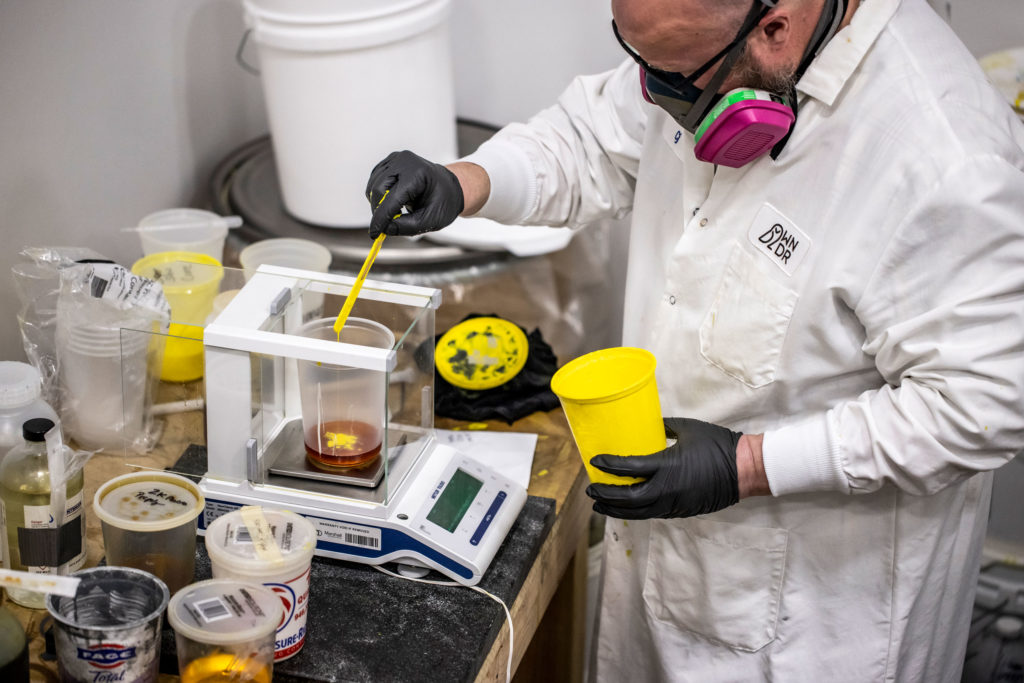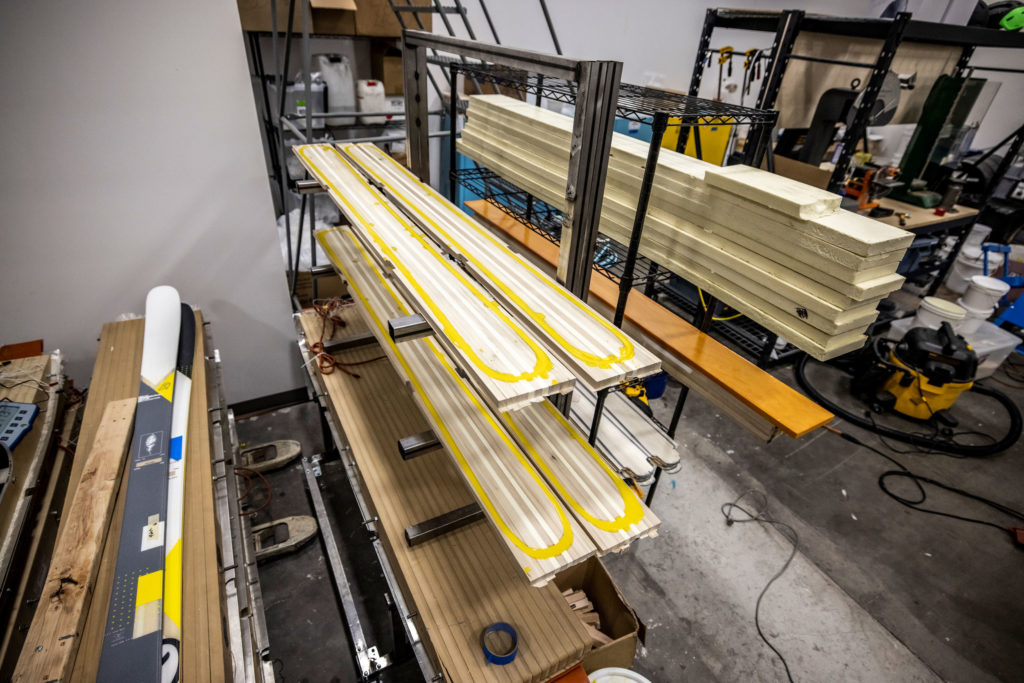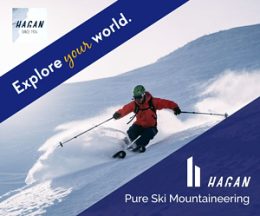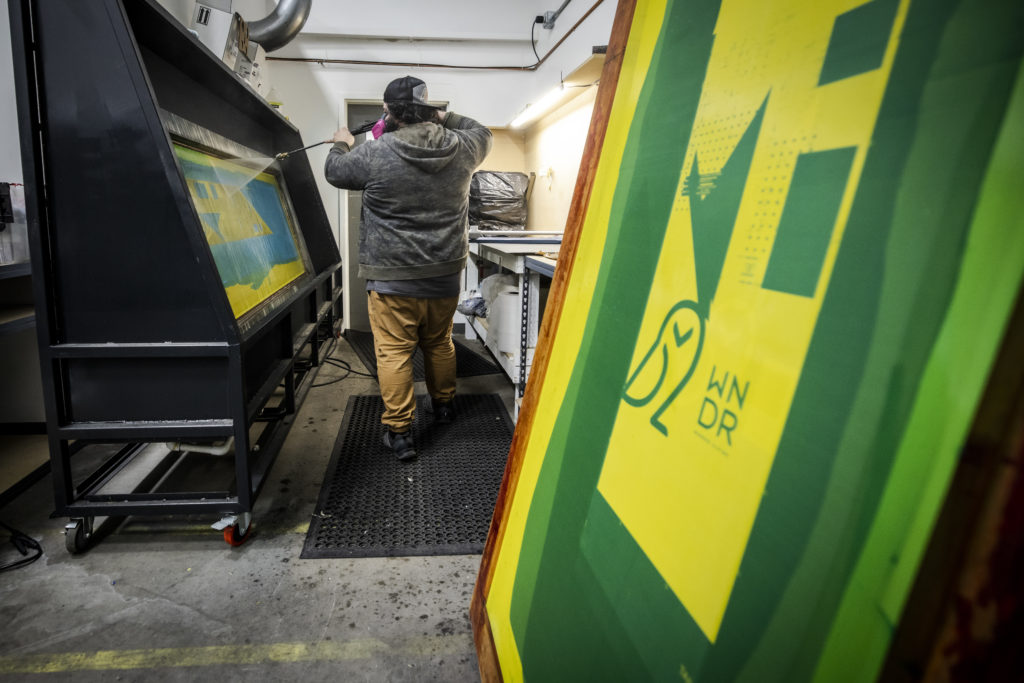WNDR Alpine Builds Backcountry Skis with Algae
When Matt Sterbenz, former pro skier and founder of 4FRNT, walked around Outdoor Retailer’s Snow Show in 2018 showing off a jar of oil made from algae, no one really understood what he was after. Certainly no one imagined that less than a year later he’d be at the helm of a new environmentally sustainable ski company, WNDR Alpine, that had effectively replaced petroleum with plant-based oil.
Innovation in any industry takes time, dedication, and a willingness to learn from mistakes. And when it comes to the unforgiving and high-profile world of ski manufacturing, it also takes vision, tenacity, and curiosity—character traits that Sterbenz has in spades.
Sterbenz grew up in the Midwest. In 2000, he relocated to Lake Tahoe to become a pro slopestyle skier. Motivated to improve performance, he becamed disheartened by his European sponsor’s unwillingness to connect the athlete to the process of building skis. So he founded his own ski company, 4FRNT, shifted the focus from alpine ski racing to the emerging freeride movement, and encouraged his athletes to take part in the creative design.
“We brought the athletes into the process more intimately than ever. They made decisions on the fly, tested them in Little Cottonwood Canyon, and retooled as needed. That taught us a lot about rapid R&D,” says Sterbenz.
Eventually, Sterbenz wanted to move toward a greener manufacturing process, using domestically sourced, environmentally sustainable materials. But he found he had little control over his own supply chain, which offered little transparency into the materials that went into ski manufacturing. Sterbenz realized that a seismic shift would be necessary to achieve his vision and in 2017, sold 4FRNT.
In the intervening year after the sale, Sterbenz was intrigued by opportunities being pioneered by a company called Checkerspot, a high-performance materials firm that designs materials at a molecular level. What really caught Sterbenz’s eye was their ability to manufacture polyurethanes from plant-based algae. From their laboratories in Berkley, Calif., Checkerspot became the launchpad for Sterbenz’s vision of sustainable materials and a transparent supply chain.
“When Checkerspot approached me with the ambition to develop modern polyurethane from algal-derived oil inputs, and that we could tune materials specific for the applications, I was like, ‘I had no idea that was even possible’,” says Sterbenz.

Inside the WNDR Alpine Deign Lab and HQ, which sits in an industrial park in south Salt Lake City, the materials science wing is the starting point for all products. Its inner workings resemble a laboratory facility, with stations for the mixing of the algal polyols and additional isocyanates to make ski materials that have been traditionally made from petroleum.
Several large machines test the strength and breaking points of the new formulations. CJ Rand, a polymer scientist and engineer brought over from DOW Chemical, pilots the machines as he stretches, bends, and then measures the strength of the polyurethane that goes into the “algal wall,” a substitute for petroleum-derived ABS plastic that makes up the sidewalls of traditionally manufactured skis. Utilizing a new material for the sake of sustainability is one thing, but Rand’s goal is to prove that the material is also stronger and performs consistently through its life cycle.
“Our material is perfectly elastic and will return to its original state, whereas an ABS wall would have its mechanical integrity compromised and fail,” says Rand.
They also test the integrity of the laminated algal cores that, layered with strips of domestically grown aspen, make up the heart of the ski. These foam stringers in the core damp vibrations experienced, say, while bombing through chunder on the exit of a tight couloir, and aim to give the ski a stuck-to-the-snow feel.

From the materials science bay, the cores and sidewalls come over to production. Cam Harmer, a member of the technology development team, stands over a work bench cutting edges to length and assembling the ski from the bottom up. In an effort to reduce waste, WNDR integrates scraps into this process—in this case leftover polyurethane segments to reinforce the binding plate and tail block—that other manufacturers send to the landfill.
“A term that gets thrown around here a lot is craftsmanship. Taking them from start to finish as opposed to just being hands-on with one part of the process allows us to have transparency into the quality of each pair,” says Harmer.
Of course, getting the skis into the hands of the community is another huge part of the process, and pro skier Pep Fujas leads that charge. His quiet strength and approachable attitude, not to mention his absolutely legendary skier status, makes Fujas an asset in spreading the brand’s message. The product feedback he provides the materials and production teams is also invaluable, backed up by two decades of sponsorships by some of the globe’s leading companies. Xan Marshland, manager of brand development with a background in environmental science, is Fujas’s right-hand man.
“The bottom line is that our industry has been underserved by the materials that are out there,” says Marshland. “We want to prove that these materials not only are more sustainable, but also perform better than their petroleum-based counterparts. We are also proving that we can reclaim our waste stream and reuse materials in the manufacturing process to improve each product. And it is not going to stop with skis. We have a genuine interest in the proliferation of these materials into more corners of the outdoor industry.”
The potential for bringing the plant-based oil to other manufacturing processes is huge—but the team at WNDR isn’t stopping at just the products. Sterbenz and Fujas have also initiated and developed community events to educate their consumers about things like avalanche awareness and to foster a strong mountain ethic.
Ultimately, WNDR hopes to not just make products, but to make change within the ski industry —a movement that is dedicated to preserving the wonders of nature. WNDR, indeed.




